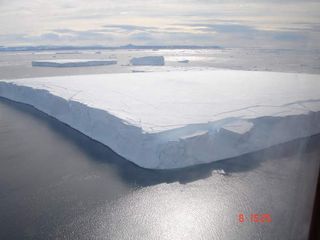Human Activity Linked to Antarctic Ice Shelf Collapse

Human-caused global warming was responsible for the collapse of an Antarctic ice shelf in 2002, scientists said today.
Changing weather patterns, a consequence of global warming, has caused stronger westerly winds to blow warm air from the middle latitudes to the Antarctic Peninsula.
These winds are responsible for the summer warming that led to the collapse of the 1,255 square-mile northern Larsen B Ice shelf, the researchers note in this week’s Journal of Climate.
In the past 40 years, the average summer temperatures in the area have been around 36 degree Fahrenheit. However, on days when westerly winds force heated air over the ice-covered peninsula's mountain ranges, temperatures could reach 45 degrees Fahrenheit.
Such conditions melted the ice, causing water to creep into the crevasses of the ice shelf, and eventually broke it apart.
"This is the first time that anyone has been able to demonstrate a physical process directly linking the break-up of the Larsen Ice Shelf to human activity,” said lead author Gareth Marshall from the British Antarctic Survey. “Climate change does not impact our planet evenly - it changes weather patterns in a complex way that takes detailed research and computer modeling techniques to unravel.”
- Images: Blue Marble Art
- Waves from Top of the World Destroy Huge Iceberg at Bottom
- Global Warming or Just Hot Air? A Dozen Different Views
- Images: Ice of the Antarctic
- All About Global Warming
Sign up for the Live Science daily newsletter now
Get the world’s most fascinating discoveries delivered straight to your inbox.
Most Popular





